Eastern Tibet is full of differences
Located in the southeast of the Tibet Autonomous Region, bordering Lhasa to the east, Chamdo to the south and Nakchu to the north, Nyingchi (literally Throne of the Sun in Tibetan) is named for its unique location. With a minimum elevation of just under 900m and a maximum elevation of 7,782m above sea level (Namchebarwa Peak), Nyingchi boasts the world’s largest difference in elevation and is the place where the sun can be seen rising daily in Tibet. The average elevation of around 3,100m makes it the lowest, most fertile and most scenic region of the Tibetan wilderness. Surrounded by the Himalayas and Nyainquentanglha ranges, and considered the Switzerland or Jiangnan of Tibet, Nyingchi is blessed with many beautiful lakes, deep canyons (Yarlung Zangpo Grand Canyon - the deepest canyon in the world), vast forests, vast fields of rhododendron flowers and peach gardens filled with pink when spring comes.
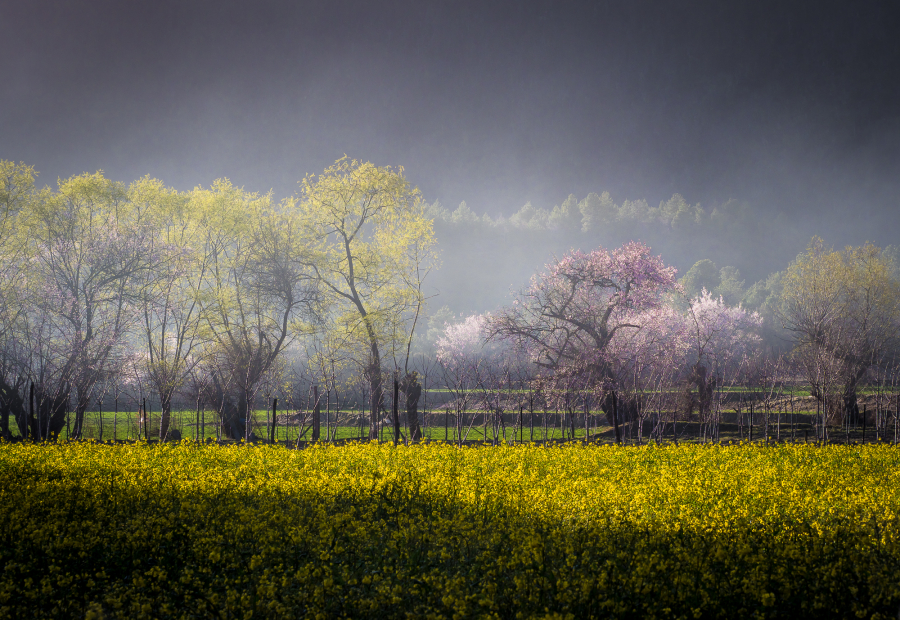
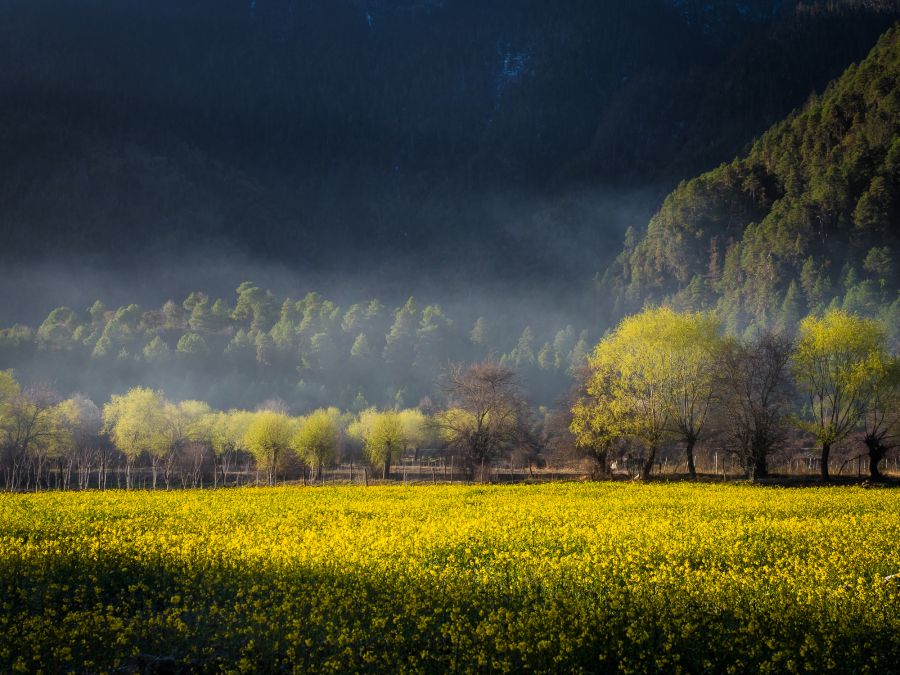
Our journey started from Lhasa, followed Highway 318 to Bayi, Pomi, Rawok Lake and returned to Lhasa via Linla Highway (old road). However, to save time, you can fly directly from Chengdu to Nyingchi and then return to Lhasa (if you want).



In late spring in Eastern Tibet, peach blossoms in some places no longer maintain their bright colors. Ancient peach trees, with several trunks on one tree, growing by the lake, growing along the road, growing on the mountain, growing in the rock… stretched out their long, skinny arms full of flowers, some pink, some white, waving to us in the wind. In some places, the sky was quite foggy, sometimes even raining. In return, the clouds hung low, circling the valley, dragging their long, smoky tails on the pine trees on the mountainside, making the scenery magical, even a bit magical.

Having been to the Western Palace before, this time Eastern Tibet gave me a different perspective with a very Bhutanese architectural style. The houses and monasteries typical of the Nyingma sect here always have roofs (although the slope is quite low, they still have roofs, not flat roofs like in Lhasa or the West); the windows, beams, and supporting rafters are all painted with patterns and lungta are hung fluttering around the windows, above the prayer wheels with all the colors: green, turquoise, pink, purple, white, yellow, red... very eye-catching. Outside the Lamaling monastery there is also a very ancient set of wooden and stone genitalia.
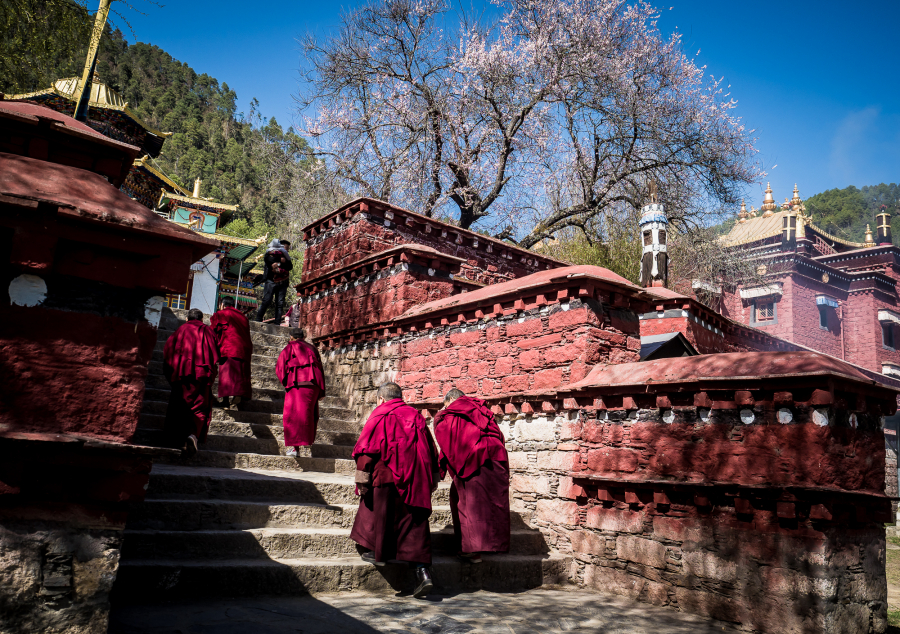
Beautiful Nyingchi
Leaving Bayi, we went to Pomi - the land of peach blossoms. At this time, the flowers are in full bloom, some places even open peach blossom fairs, selling tickets for tourists to come in and see, it is very crowded. These places can be entered or not entered, because in fact, just stop your car along the roadside and you can admire and have enough pictures to make you fascinated with peach blossoms.
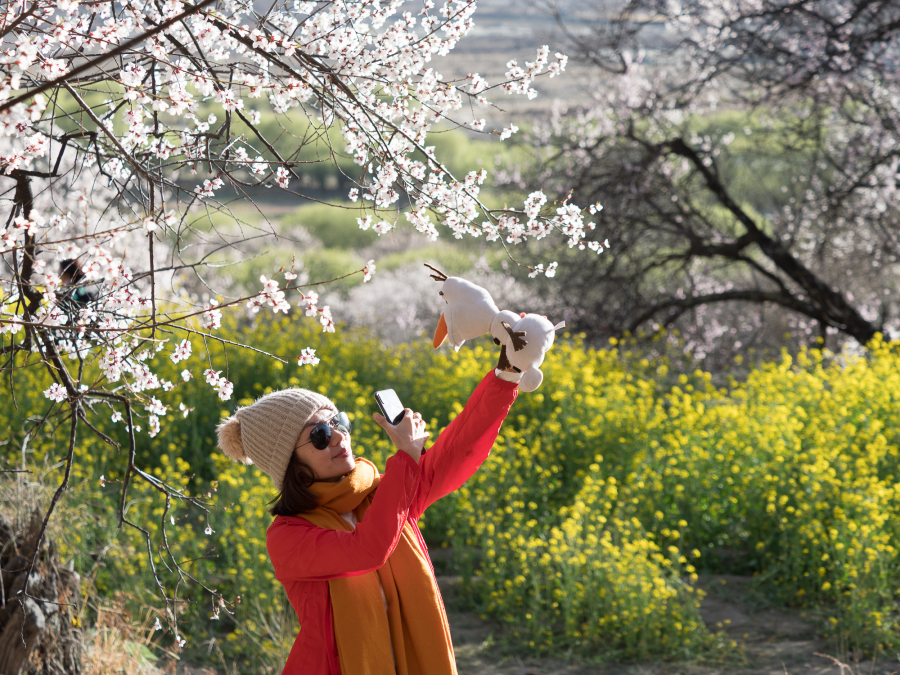
Another place in Pomi that I really like and highly recommend if you come is Rinchen Family Lodge, located next to Barkhar Gompa. This place has wooden bedrooms, although the soundproofing is a bit poor, but the decor is very lovely. The bathroom has four high-power heaters that are quite warm, so you don't have to worry about getting cold when going to the toilet or taking a shower like in the West. And especially, each room has a small balcony, a set of beautifully carved tables and two chairs. Sitting here sipping ginger tea (brought from Vietnam) while watching the peach blossoms fluttering in the wind and the blue river in the distance is really great. At night, there are campfires and dancing, the restaurant is in a separate area, serving milk tea and quite delicious dishes.
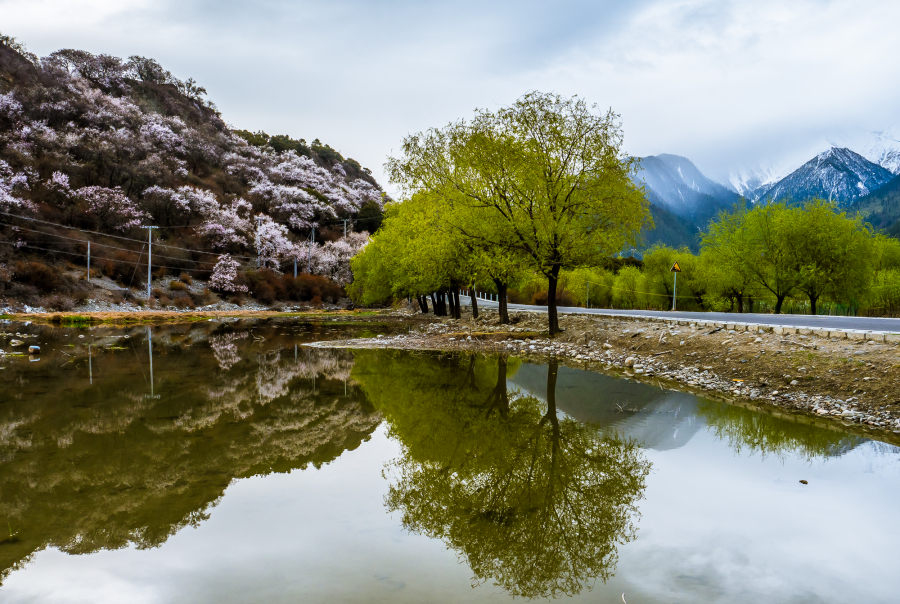
Nyingchi is not only about peach blossoms, Nyingchi also has the majestic sacred mountain Namchebarwa, nearly 7,800m high, covered in fog almost all year round. From Bayi, we set off quite early, with the faint hope of seeing the sunrise. In this season, the sky is very foggy, the clouds are thick and quite low. When the car stopped at the top of Serkhim La Pass, the dawn was fading, the sky and earth were only gray-white, surrounded by snow. Suddenly, in a moment, the gray clouds drifted away, the sharp peak of Namchebarwa gradually appeared, little by little under the golden sunlight. And I thought, how lucky we were.
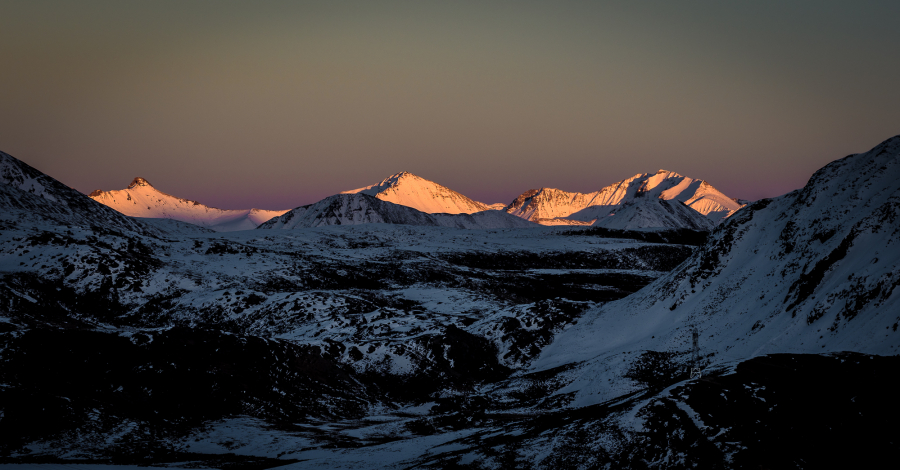
In addition, Nyingchi also has rivers and lakes with brilliant blue water. Rawok Lake (Rawok tso), located at an altitude of 3,800m above sea level, the furthest point in the Eastern Tibet route that foreigners can be granted permission to go, is also included in this itinerary. The road to the lake winds along the Nyang River, which is a tributary of the Yarlung-Tsangpo River, located on the rugged mountain slopes. This season, the weather is still very cold, and in some places on the lake, the ice and snow are still so thick that it feels like you can step on them. The colors of snow - lungta, water - sky seem to blend together, cool and quiet.
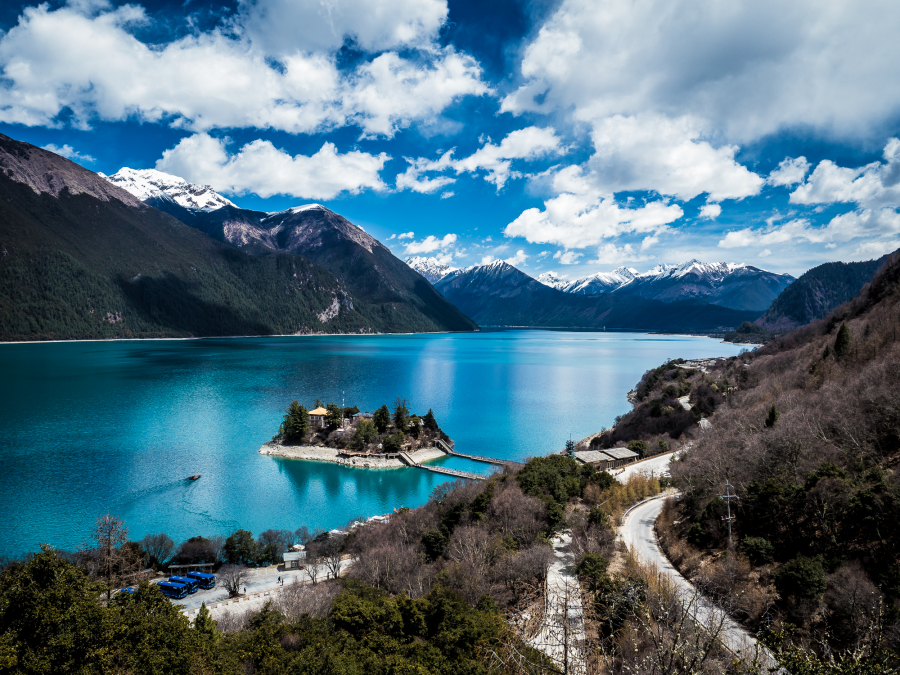
Sacred Lake and Glacier
One of the places that cannot be missed when talking about Eastern Tibet is Basum Tso - the largest sacred lake of the Nyingma sect in Nyingchi. Basum means blue lake in Tibetan, with an area of 26km2, located at an altitude of 3,538m. Rated by the World Tourism Organization (UNWTO) as one of the world's tourist attractions (in 1994), considered a National Forest Park (in 2001) and ranked as a AAAAA scenic spot, Basum Tso is truly beautiful with its deep blue lake, like a mirror reflecting the surrounding mountains and forests. Tashi Island is located about 100m from the shore, on which is the Tso Dzong monastery - a Nyingmapa monastery built during the Tang Dynasty with Zodiac trees that are 1,300 years old. Near the southern shore is a Qiuzi hole, blessed by Padmasambhawa, where people often come to pray for children and there is also a cave where Guru Rinpoche once meditated.
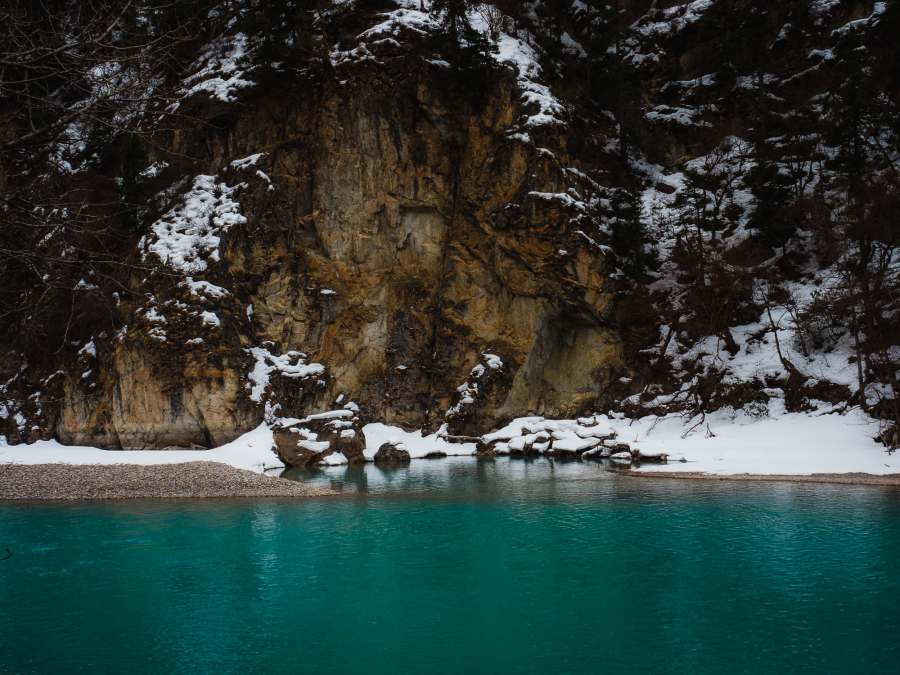

If you like exercise, Midui Glacier is also a relatively reasonable choice. From the last parking spot, it takes about 2 hours to trek to the viewing point. You can also rent a horse (with someone leading you) in case you are not physically fit for a few dozen yuan. The day we went, the clouds covered the mountain so we couldn’t see it, so the place lacked some of its charm. However, based on some photos I saw before going, it didn’t look too bad.
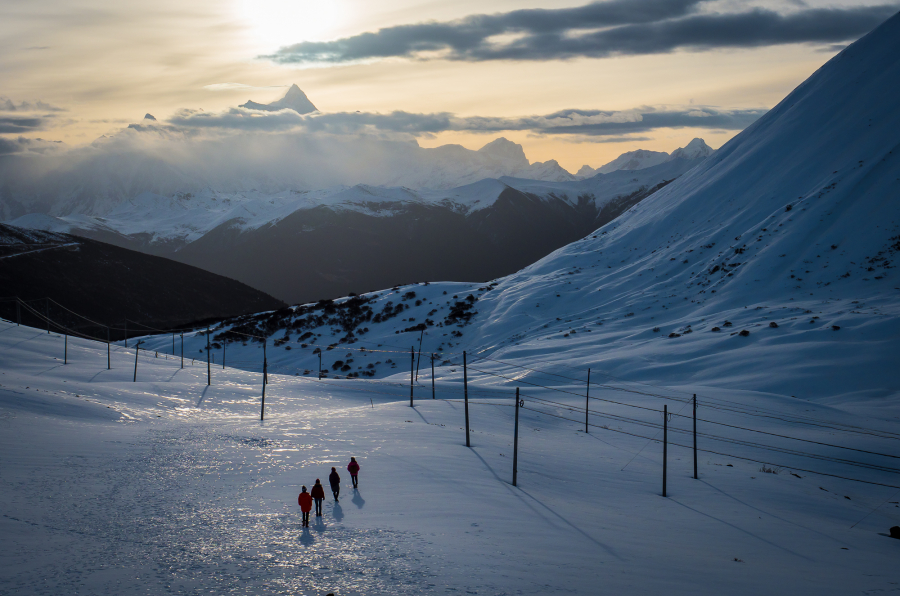
On the last day in Nyingchi, walking around the front of the hotel, a carpet of tiny white flowers flowed across the garden as if signaling the arrival of summer. Yellow dandelion petals also began to appear. Blue and purple wildflowers also quietly burst from the ground, dotting the place. Pink azaleas as pretty as bells also gradually stretched themselves to wake up. In summer, this place would surely be filled with flowers.
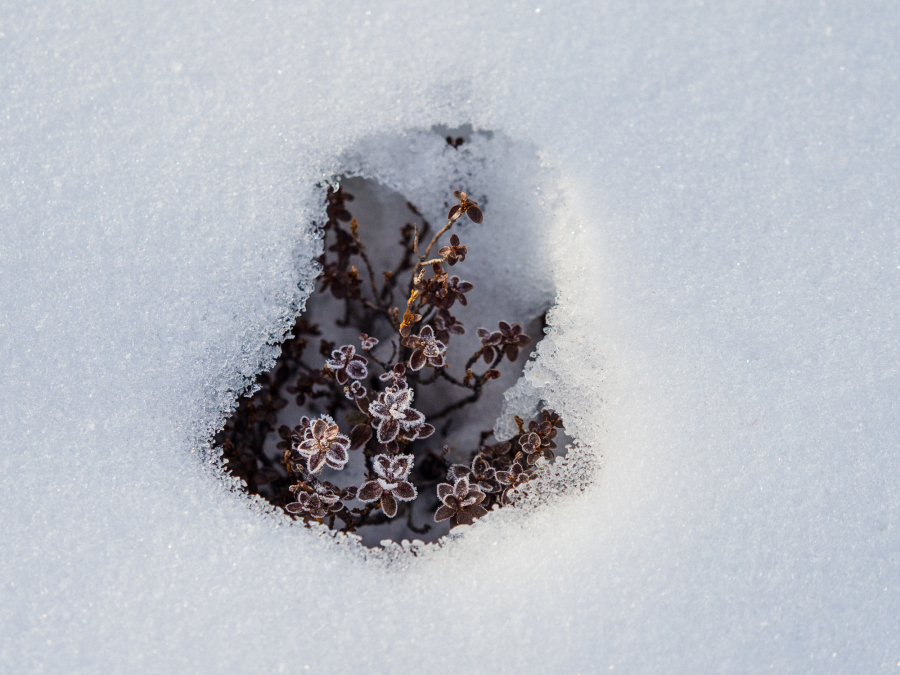
The above is just a small corner of the Eastern Tibet region, however, that is the limit that foreigners can go due to the restrictions on tourism policies of the Chinese government. And because I have been to Tibet, the Western region and especially the harsh offroad section in the North last September, I can confirm that Eastern Tibet is too gentle, beautiful and peaceful with green trees and peach blossoms everywhere. Lower altitude, more oxygen, more pleasant air, more diverse colors, better roads, and especially much better accommodation conditions have made this place have everything to become an absolutely ideal place for those who set foot in Tibet for the first time and want to enjoy a vacation with a bit of so-called enjoyment and happiness, completely different from the West.

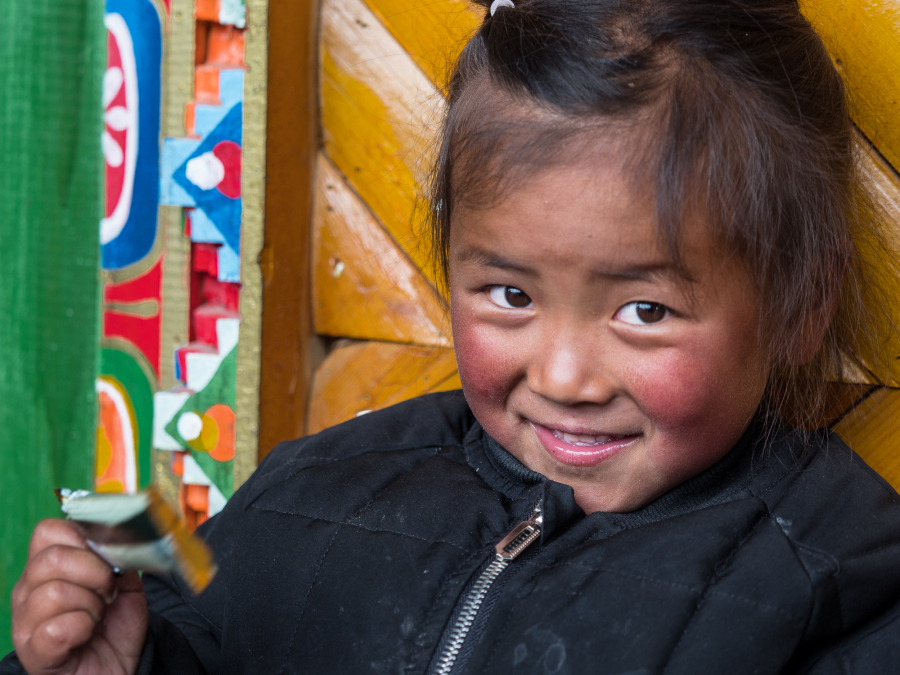
More information
Visa:You need to apply for a Chinese visa
Trip:From Vietnam, you need to fly to Chengdu (or Kunming) and then fly to Lhasa/Nyingchi. You can also take a train from Chengdu to Lhasa.
Time:With the best terrain and climate conditions in Tibet, Nyingchi is suitable for traveling in all four seasons. However, from early March to mid-April every year, the Chinese government usually does not issue visas for tourists to Tibet, so you should consider carefully when deciding to go to Eastern Tibet in the spring. Late May to the end of June is the time when rhododendrons bloom, which will be very beautiful. October and November will certainly be a great choice for those who are fascinated by the golden colors of autumn.
Cuisine:Because Chinese food is quite greasy and greasy, even very spicy, you need to pay attention before ordering. You can bring more dry food from home to reduce the feeling of fullness, but you need to check carefully if it is allowed to enter the country.
Weather:Spring, autumn and winter in Tibet are very cold. When we went in early April, the temperature was usually around 2-5 degrees in the morning, a little higher at noon and at night it could drop below zero.
Skin:
- Tibetans discourage wearing short skirts and shorts and do not allow them in temples. Even if you wear a long skirt, you should wear tights underneath for modesty.
- When going up the mountain passes, you may encounter snow and strong winds, so earmuffs, scarves, gloves, and thick socks are essential. Wear layers of clothes so you can take them off gradually if you get too hot.
Money: Tibetans also use the Chinese currency (CNY). The exchange rate is 3,400 – 3,500 VND = 1 CNY. You can also use USD to spend in Lhasa for purchases (Cordyceps, saffron, ...). Or if you have Wechat, and your Wechat account is linked to your bank account, you can also pay directly with Wechat.
Other notes:
- Because entering Tibet requires a lot of permits, all of which must be obtained through a Chinese tour company, backpacking is not possible in Tibet. After obtaining a visa, you need to scan your passport and visa for the Tibet agency to process the permit application. You need these documents to check-in at the airports (Chengdu/Kunming...) before entering Lhasa/Nyingchi.
- Domestic flight tickets in China should be booked by companies in Tibet (partly because it's convenient, and partly because I heard that if you don't have a Chinese ID, you won't be able to buy them yourself).
- Due to licensing regulations, when entering Tibet, you will need a tour company/travel agency to receive you. The tour company will be fully responsible for transportation, transportation, airport pick-up and drop-off. We only need to be responsible for having fun, sightseeing, taking photos comfortably and in a civilized and polite manner. I went to Tibet twice, from West to East, both times using the services of Tibet FIT, and felt completely satisfied and comfortable. This is a company run by Tibetans, from drivers, to accountants, to tour guides, to CEOs, all are Tibetans, and have led many Vietnamese groups, so they understand the tastes and desires of Vietnamese people.
Estimated cost for the trip: approximately $2,300/person for a 14-day trip.


































